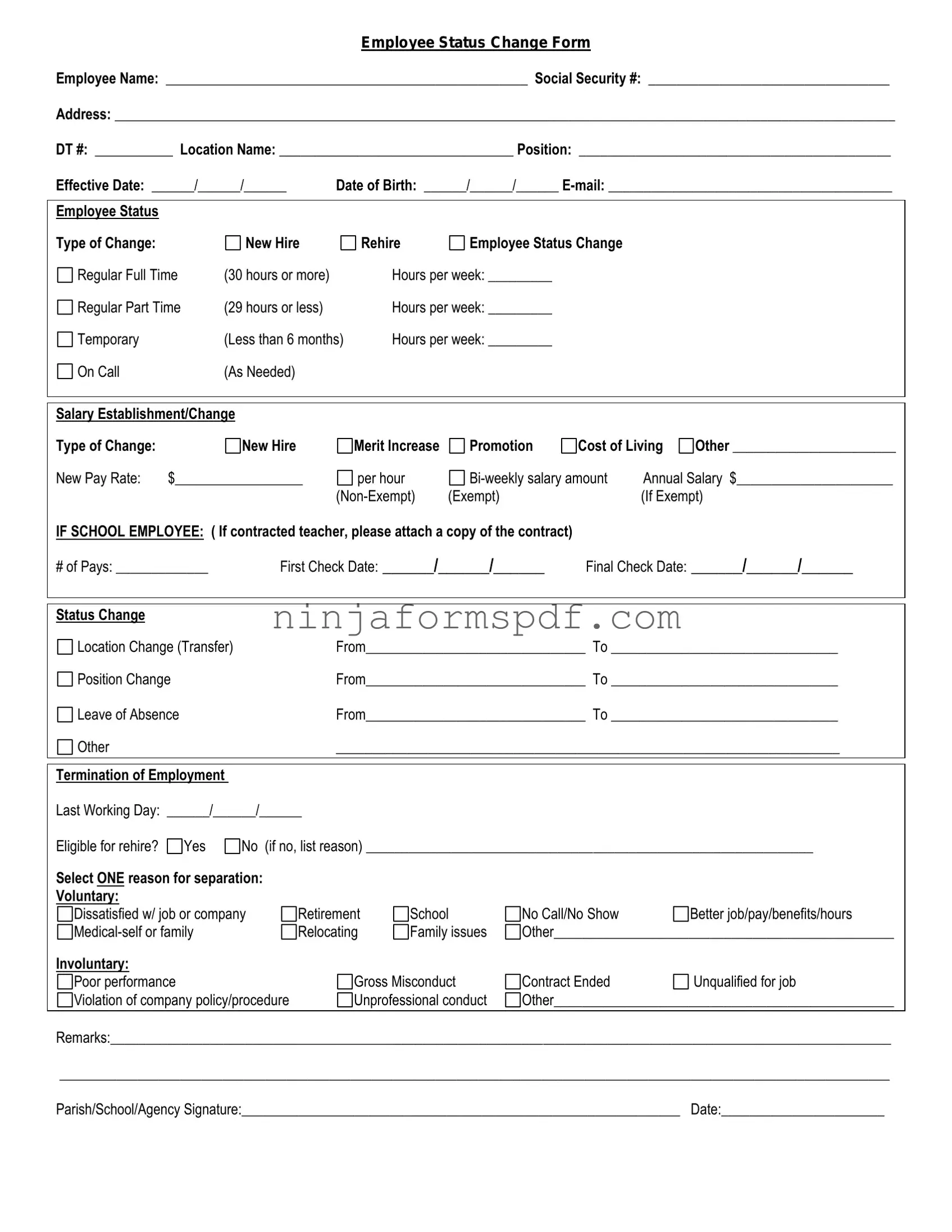What is an Employee Status Change form?
An Employee Status Change form is a document used by employers to record any changes in the employment status of their employees. This could include changes in position, salary, work hours, or any other significant job-related transitions.
When should the Employee Status Change form be used?
This form should be used anytime there is a change in an employee's job status. It ensures that the company's records are up-to-date and accurately reflect each employee's current employment situation. Common instances include promotions, demotions, salary adjustments, or changes in job responsibilities.
Who is responsible for filling out the Employee Status Change form?
Typically, the immediate supervisor or the human resources department is responsible for completing the Employee Status Change form. However, it's crucial for both the employer and the employee to review the details together, ensuring accuracy and mutual understanding of the changes made.
What information is required on the Employee Status Change form?
The form generally requires detailed information about the employee’s current and new status. This includes the employee's name, employee ID, the effective date of the change, specific details about the change (e.g., new title, salary, work schedule), and approvals from relevant managers or HR personnel.
How does the Employee Status Change form impact payroll?
Changes documented on this form can directly impact payroll processing. For instance, a change in salary or work hours necessitates adjustments in the payroll system to ensure the employee is compensated correctly. Prompt and accurate completion of the form is essential to avoid payment errors.
Is the Employee Status Change form kept confidential?
Yes, the Employee Status Change form is a confidential document. It contains personal and potentially sensitive information. Therefore, it should be handled and stored securely, with access limited to authorized personnel only, typically within the human resources department.

